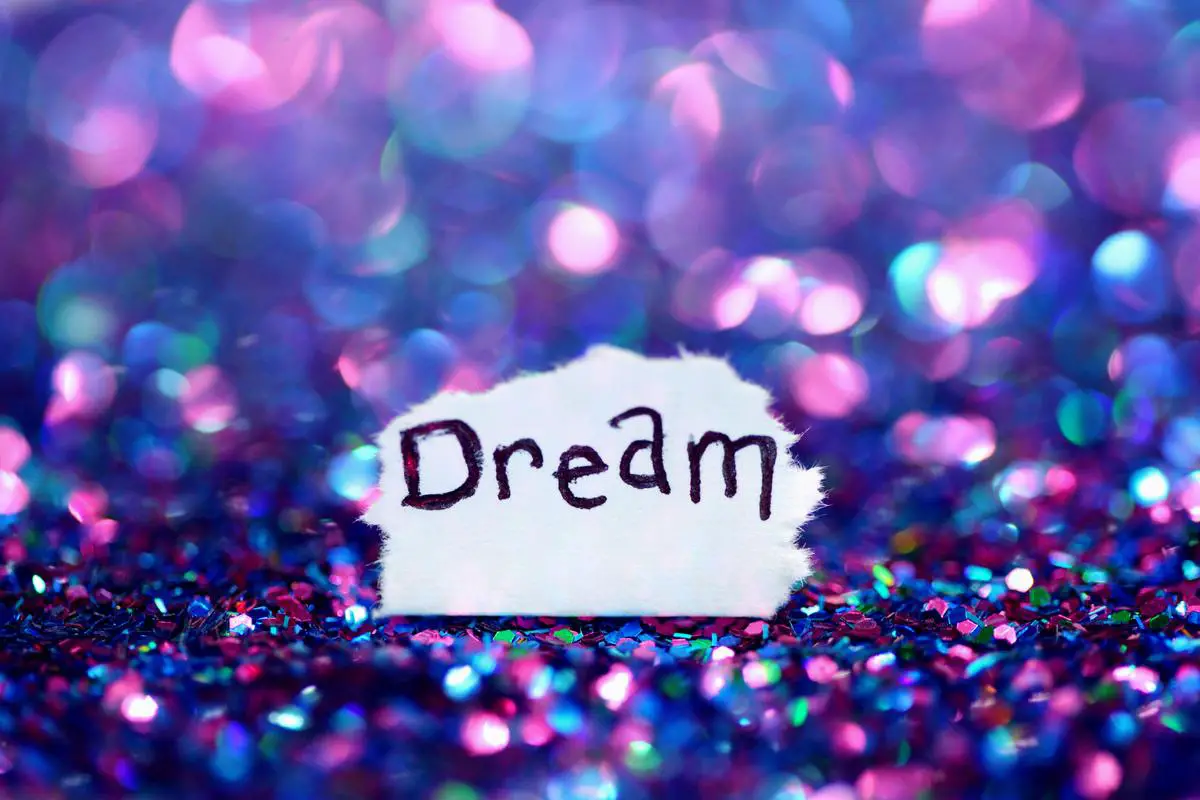From the hieroglyphs of ancient Egypt to the psychoanalysis of Freud and Jung, the interpretation of dreams and their enduring symbols has fascinated human civilization for millennia. Dreams serve as a captivating portal into the depths of our subconscious, weaving narratives often brimmed with profound symbolism. The symbol of flooding, in particular, is a compelling one, leaving numerous interpretations trailing in its wake. Encompassing historical perceptions, psychological interpretations, and the latest neuroscientific insights, this exploration aims to delve into the multifaceted nature of flood symbols in dreams and tease out their complex meanings.
Historical Overview of Dream Symbols
The historical perspective of dreams has always fascinated the study of the unconscious mind by providing a rich tableau for analysis from an academic and scientific standpoint. Steeping deep into the annals of our history, interpretations of dream symbolism have evolved across diverse geographies and cultures, presenting a fascinating narrative of the mystical and the scientific.
The ancient Egyptians, revered precursors of numerous scientific and philosophical knowings, held a profound respect for dreams. They considered dreams as a potent form of divine intervention and communication, carrying messages from gods to humans. Indeed, dream interpretation was of considerable prestige and importance in their society, with professional dream interpreters finding esteemed roles within their social hierarchy.
This theory of divine communication was shared by the ancient Greeks, who maintained that dreams harbored prophetic powers. The Oracle of Delphi and other places of dream incubation were popular destinations for those seeking divine guidance through dreams. Simultaneously, Greek philosophers like Aristotle posited empirical theories interpreting dreams as residues of daily life experiences.
Across the globe, in indigenous Native American societies, dreams held a prominent meaning as well. Perceived as a conduit to the spiritual realm, dreams, for them, held key symbolisms that conveyed directions for personal growth or community welfare.
Fast forward to the Renaissance period in Europe, and dreams regained attention from a theological perspective. The idea that dreams might be divine messages became popular once again, often resulting in dream sequences appearing as theological plot elements in literature and theatre.
However, with the arrival of the Enlightenment era in the 18th century, society began to view dreams from a new lens, one grounded in reason and rational thought. Dreams were now seen as a byproduct of the sleeper’s mind, rather than divine intercessions.
The 19th and 20th-century science heralded a significant shift in dream analysis through the emergence of Sigmund Freud’s and Carl Jung’s psychoanalytical theories. Freud proposed that dreams served as the gateway to our unconscious mind, often revealing suppressed desires. Jung, on the other hand, argued for a more symbolic interpretation of dreams. He suggested archetypes and universal symbols in dreams were conduits for self-understanding and self-actualization.
In the contemporary world, cognitive and neurological sciences introduced a more data-driven approach to dream analysis. Exploring the firing patterns of neurons during sleep and their correlation to dream content provided new insights into the mechanistic understanding of dreams.
As a canvas of symbolism and metaphor, or simply the random firing of neurons in the brain, the perspective of dreams varies as widely as the interpretations of their meaning. As we continue to unravel the depths of dreams, we preserve and respect their historical and cultural narratives, and appreciate the precious insights they’ve offered us into the human mind.

Photo by sharonmccutcheon on Unsplash
Psychology and Dream Symbols
In light of diverse cultural and historic lenses through which we’ve examined the world of dreams, we now turn our focus on more contemporaneous psychological theories surrounding dream symbols, specifically those involving floods. Despite strides made in the realm of cognitive and neurological sciences in unveiling the neural mechanisms behind dreaming, the symbolism that dreams encompass remains an area rich in ambiguity and interpretation. Our pursuit to explicate dreams draws upon primary psychological theories including psychoanalytic, cognitive, and existential approaches.
Freud’s psychoanalytic theory has held enduring influence in interpreting dream symbols. While the primary assumptions of Freud’s theory are now commonly accepted – conceiving dreams as an intricate tapestry of desires, experiences, and emotions – his view on flood dreams offers intriguing insight. For Freud, dreaming of floods could be indicative of repressed emotion or anxiety, overflowing from the unconscious mind. Flood symbolism may represent a release of these buried ‘waters’ – emotions or impulses, signaling the need for emotional cleansing or release.
Conversely, Carl Jung diverged starkly from Freud’s sexual-laden perspectives, conceiving dreams as a portal to one’s ‘collective unconscious’. Flood dreams, under Jung’s archetype theory, correlate to ‘the great mother’ archetype, symbolizing creative or destructive nature of subconscious mind. Jung reasoned such dreams may serve as humankind’s deep-rooted fear or reverence toward nature’s dualistic power.
From a cognitive perspective, Revonsuo’s “Threat Simulation Theory” offers a distinctive understanding – suggesting dreams simulate threatening events to prime our cognitive mechanisms for effective real-world responses. This implies flood dreams may not necessarily carry personal emotional meaning but instead act as a cognitive rehearsal for potential natural disasters.
In the existential-humanistic realm of psychology, Rollo May theorized dreams as avenues for existential engagement, reflecting our deepest fears, desires, and conflicts. In light of this, dreaming of floods may symbolize existential anxiety, a signal of the individual’s confrontation with their own finitude and mortality.
Moreover, within the frameworks of modern sleep and dream research, the continuity hypothesis, positing a close relationship between waking-life experiences and dream content, may suggest that flood dreams could be a result of exposure to related information or experiences, possibly linked with personal distress or worry about societal issues such as climate change.
Ultimately, the interpretation of flood dreams, like many dream symbols, is far from monolithic. It is influenced by diverse theoretical standpoints, cultural variables and personal experiences. This serves as a reminder of the complexity and subjectivity in dream interpretation, the need for multi-disciplinary engagement, and a concession that within this fascinating realm, many questions remain to be explored.

Neuroscience and Dream Symbols
Harking back to the erudition gleaned from history and psychological theory, the investigation now delves into the realm of neuroscience, a domain where tangible biological mechanisms start to elucidate the highly abstract symbolism of our dreams.
Neuroscience justifies dreams as complex interplays between diverse regions of the brain. The activation-synthesis hypothesis, propounded by Hobson and McCarley, proposed that the symbols in our dreams stem from neuronal firing patterns in the brain during REM sleep, particularly in the brain stem’s pons region. Far from being chaotic, these firing patterns could potentially generate the symbols that pervade our dreams.
Neuropsychological studies corroborate this proposition, indicating that the frontal lobes, often associated with logic and planning, are less active during REM sleep. Inversely, areas associated with emotions and memories, such as the amygdala and the hippocampus, show higher activity. These altered activation patterns could explain why dreams often manifest as emotionally charged and symbolic narratives detached from logical coherence.
The bizarreness characteristic to many dreams may be attributed to the reduced functioning of the prefrontal cortex, responsible for reality testing. Consequently, peculiar or imaginative scenarios in dreams are readily accepted as reality, which may contribute to the formation of symbolic content.
Neurological findings also show increased activity in the ventromedial prefrontal cortex (vmPFC), a region suggested to play a role in the self-monitoring process. This may elucidate the frequent appearance of the self in dreams, often as a projection in various symbolic forms.
Besides, the incorporation of daily experiences into dreams, observed in the continuity hypothesis, finds validation in neuroscience. The process of memory consolidation during sleep, particularly REM sleep, facilitates the integration of recently formed memories into existing neural networks. This interaction of old and new memories may generate the unique amalgam of symbols in our dreams.
The concept of emotional regulation also intervenes in dream symbolism from a neurological perspective. The amygdala, primarily in charge of processing emotional responses, demonstrates increased activity during REM sleep. This might facilitate the emotional processing of events from waking life, which could be symbolically represented in dreams.
Lastly, the impact of neurotransmitters, such as serotonin and dopamine, on dream phenomena cannot be overemphasized. These biochemical messengers influence the brain’s emotional processing, memory, and cognitive functions, which cumulatively influence the formation of dream symbols.
In conclusion, the symbolism in dreams, beguiling as it is, reveals itself to be an intricate intermixture of neurobiology, memory processing, and emotional self-regulation. As the scientific study of dreams continues to evolve with the development of advanced neuroimaging and neuropsychological techniques, there is a palpable hope that the veil shrouding the symbolism in dreams will be progressively lifted.

Photo by frankie_k on Unsplash
Flood Dream Symbol Interpretation
Shifting the lens to modern neurology offers an exciting new frontier to understanding dream symbols like flooding. The activation-synthesis hypothesis, proposed by Hobson and McCarley in 1977, suggests that dreams are a product of our brain trying to make sense of random neuronal firing during REM sleep. In this context, a flood in a dream might stand as the brain’s interpretive response to a specific firing pattern.
The neuroanatomical landscape of the dreaming brain also provides insights. Frontal lobes, the amygdala, and the hippocampus are actively involved in dream generation. Alterations in the functioning of these brain regions can potentially manipulate the dream content, switching a peaceful river into a catastrophic flood.
Especially significant is the role of the prefrontal cortex. The reduced functioning of this brain region during dreaming contributes to dream bizarreness—a flood dream could be a manifestation of this skewed reality construction. Interestingly, another part of the prefrontal cortex, the ventromedial prefrontal cortex, is linked to self-monitoring. Its influence can consequently manifest as floods—symbols of self-reflection and personal scrutiny in dream literature.
Memory processes during sleep, primarily consolidation, might also cast light on flood dreams. Daytime experiences morph and integrate into our dream narratives, forging symbolic links. Hence, encounters with excessive water—swimming, boating, or even a sun shower—could transform into flood depictions in dreams.
Amid these neuronal processes, the emotional brain stands pivotal. Emotional regulation and the amygdala profoundly shape dream symbolism. A flood can be an emotional outburst, symbolizing overwhelming feelings or suppressed anxieties.
Neurotransmitters, chiefly serotonin and dopamine, modulate dream formation at a more granular level. Imbalances or alterations in levels of these neurotransmitters could create a domino effect, possibly culminating in a flood dream.
These interpretations hint at an intricate tapestry interweaving subjective experiences, emotional dynamics, and neurophysiology. Moreover, they underscore the immense potential of neuroimaging and neuropsychology to unlock further secrets behind dream symbolism. As the field advances, we hope to unveil new layers of knowledge that shed even more light on the mysterious world of dreams. Fantastic as it may sound, a flood dream could one day act as a window—peering into the ebb and flow of an individual’s cognitive processing, emotional landscape, and even neuronal health.

Photo by kellysikkema on Unsplash
Applying meaning of flood dream symbols
The interpretation of flood dream symbols offers a robust framework for introspective self-analysis. Given everything preceding, the subsequent understanding can open the door to a suite of practical applications. In psychotherapy, understanding the origin and symbolism of recurring dreams of floods can facilitate a patient’s journey towards self-awareness and recovery. Often, these dreams might represent an individual’s feelings of being overwhelmed, which could be a telltale sign of insufficient stress management or unresolved traumatic experiences. Therefore, psychotherapists can utilize the insights gleaned from dream analysis and exploration of these flood symbols to support therapeutic strategies like Cognitive Behavioral Therapy (CBT) or Eye Movement Desensitization and Reprocessing (EMDR).
Not only in individual psychotherapy, the practical edge of flood dream interpretation also bleeds into the community and societal domain. As individuated cultural associations with water and floods might affect how they uniformly appear in dreams, geographical and cultural contexts must play a prominent role in ethnographic studies and sociological research. Illuminating the shared unconscious symbols could foster a better understanding of collective traumas, anxieties, hopes, and narratives within a community.
Moreover, in the emerging field of sleep education, the understanding of flood dreams can assist sleep educators in better equipping the public to discern and navigate their sleep experiences. The objective could range from fostering healthier sleep habits, explaining the normativity of vivid or disturbing dreams, to enabling individuals to leverage their dreams for creative inspiration or problem-solving, as suggested in anecdotal accounts and research studies surrounding “aha” moments in dreams.
Lastly, the cognitive neuroscience frontier sees an abundance of potential research directions. With advancements in neuroimaging techniques and artificial intelligence, the future may reveal an even more profound understanding of dream symbolism and processes, including flood dreams. There could be correlations between specific neurological activities and particular dream symbols. The exploration may start to unravel the complex network of neuronal firing patterns that underlie the mysterious realm of dreams – our nightly inner theatre. This understanding can supplement biomarkers to monitor neuronal health, validate psychological treatments, or even predict lateralized brain functions.
In conclusion, discerning the underpinning of flood dreams has a myriad of practical implications. The spectrum of applications remarkably span from personal to communal, from therapeutic to educational, building bridges between the realms of the conscious and unconscious. The dialogue between dream symbols, ethereal as they might be, and waking life seems indubitably rich and potent, awaiting further cross-disciplinary exploration and appreciation. As the field evolves, one continues to marvel at the depth and ripples generated by these explorations, epitomizing the phrase “dreams are today’s answers to tomorrow’s questions”.

With a balanced understanding of flood dream symbols, we can equip ourselves with a more comprehensive perception of our subconscious thoughts and feelings. The interpretations of these dreams, stemming from diverse perspectives – cultural, spiritual, and psychological, can serve to guide our reflection and potentially influence our waking life actions. It showcases the universality of dream symbols, like that of a flood, and underscores their potent influence on the human psyche. Finally, it empowers each one of us to make sense of the ebbs and flows in our innate emotional landscape, reminding us that even the most turbulent waters might just be signaling towards remarkable personal growth.
